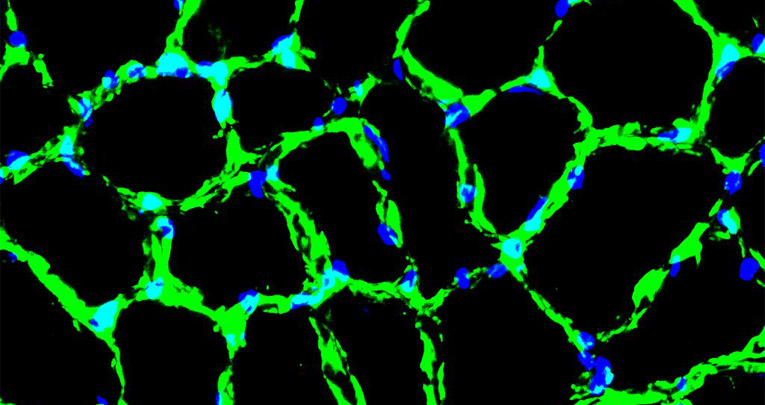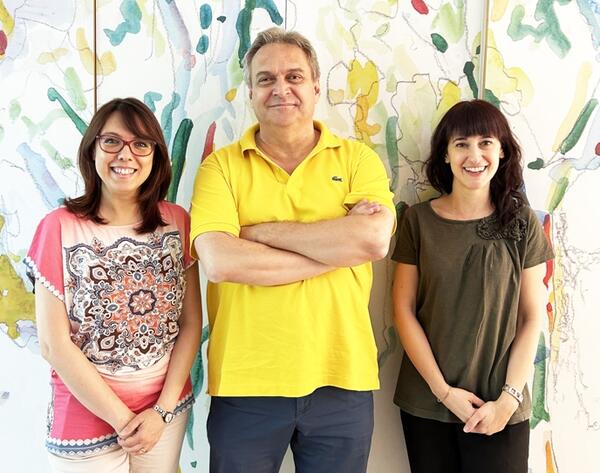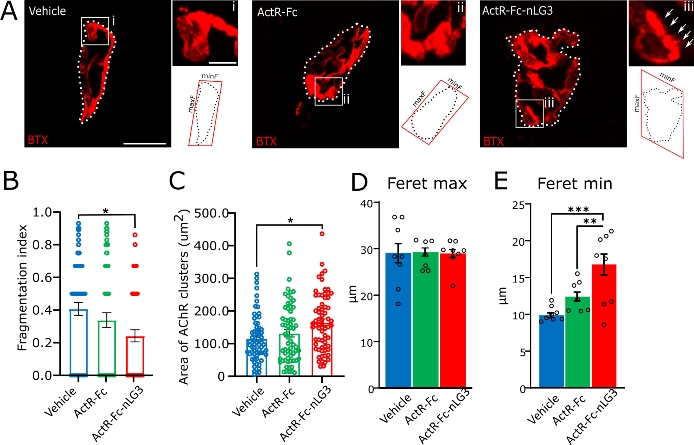
Aging and Disease , 2 August 2023
A novel compound enhances nerve-muscle interaction stability and physical endurance, counteracting sarcopenia in the elderly
Synergistically Acting on Myostatin and Agrin Pathways Increases Neuromuscular Junction Stability and Endurance in Old Mice
Schellino Roberta
1,2, *
, Marina Boido
1,2
, Jan W. Vrijbloed
3
, Ruggero G. Fariello
3
, Alessandro Vercelli
1,2
1
Department of Neuroscience Rita Levi-Montalcini, University of Turin, Turin 10126, Italy
2
Neuroscience Institute Cavalieri Ottolenghi, University of Turin, Orbassano, 10043 Italy
3
PharmaFox Therapeutics AG, Möhlin, Aargau, Switzerland
*
Corresponding Author
Sarcopenia is a condition characterized by the loss of muscle mass and strength that occurs physiologically with aging. This condition can negatively impact the quality of life of older people by increasing frailty, reducing the ability to perform daily activities, and compromising independence. The prevailing approach to counteract this condition is to increase muscle mass by inhibiting the pathway of myostatin. However, this strategy only moderately improves muscle strength and fails to support muscle innervation, leading to a progressive deterioration of motor abilities over time.
In the study published in Aging and Disease , Drs. Roberta Schellino and Prof. Marina Boido from the Brain Development and Disease Group , led by Prof. Alessandro Vercelli , in collaboration with the Swiss company Pharmafox Therapeutics , tested a r ecently patented molecule called ActR-Fc-nLG3 on a mouse model of aging. This innovative molecule consists of a portion that inhibits myostatin -to increase muscle fiber tone - and another portion that activates the agrin pathway, a protein involved in the formation and maintenance of neuromuscular junctions (NMJs).
NMJs represent the contact between motor neurons and muscle fibers, where nerve impulses are transmitted, leading to muscle contraction. With aging, NMJs become less stable: the junctions can fragment and lose innervation, causing reduced muscle contraction capacity.
The study demonstrated that chronic administration (5 weeks) of ActR-Fc-nLG3 in aged animals (2-year-old mice) improved NMJ stability, making the endplates larger and non-fragmented, and improved innervation, preventing muscle fiber atrophy and thereby counteracting the sarcopenic phenotype. This also resulted in improved motor performance, increased strength, and higher endurance in prolonged physical activities. The results were compared to those obtained in a group of old mice treated only with the myostatin inhibitor, where an increase in muscle mass was observed but no improvement in NMJ stability and motor performance.
In conclusion, the study revealed important findings on the on synergistic action of myostatin and agrin pathways on neuromuscular efficiency in the elderly, and demonstrated the efficacy of ActR-Fc-nLG3 treatment in a preclinical model of sarcopenia. This novel molecule shows promise for the development of therapies aimed at increasing muscle strength and endurance to counteract sarcopenia. ActR-Fc-nLG3 could contribute to improving the quality of life in individuals affected by sarcopenia or other degenerative muscle conditions.
From the left: Prof. Marina Boido, Prof. Alessandro Vercelli (Scientific Director of the NICO) and Drs. Roberta Schellino









